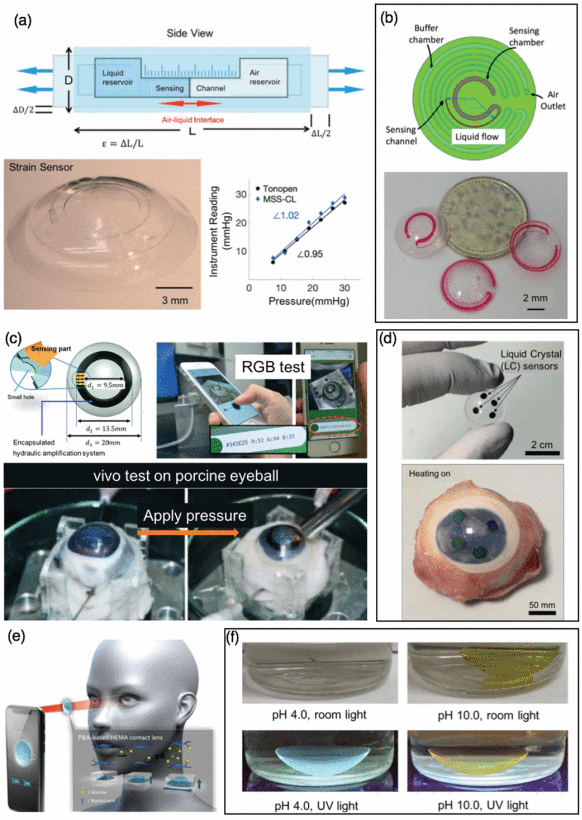Wireless Communication and Power Harvesting in Wearable Contact Lens Sensors
Initially devised as fitness trackers, the researchers started exploring the potential of wearable sensors for continuous and real-time monitoring of physical and electrophysical health parameters. Of late, the research interest shifted to incorporating biosensors into wearable devices for non-invasive and early disease diagnosis.
Scientific advances in low-power electronics, sensing materials, and nanofabrication have opened myriad options for miniature-sized, stretchable, and skin-like wearable sensing platforms for tracking physiological parameters. The contact lens has attracted greater interest because of its direct contact with eyeball and tear fluids. Body fluids like cerebrospinal fluid, saliva, sweat, and tears contain enough biomarkers to be promising alternatives to blood samples.
The sensitive location of contact lenses necessitates the lens system to be soft, biocompatible, and optically transparent. Designing and selecting reliable energy supply systems with appropriate structures, sizes, and energy densities is crucial.
The researchers evaluated various wireless power transmission (WPT) technologies and presented a comparative summary of existing and emerging WPT technologies essential for electronic contact lenses.
Unpowered contact lens sensors translate the interaction of the tears with the sensor element into biomedical, chemical, or optical signals to measure intraocular pressure (IOP), strain, glucose concentration, pH variations, and temperature. Powered contact lens systems use capacitive and piezo-resistive elements to transduce ambient stimuli into electrical, magnetic, or electrochemical readings. These smart sensors offer high sensitivity, excellent selectivity, and specific anti-interference abilities. It is challenging to apply antennas and electronics to contact lenses without compromising eyesight while maintaining high power and data transfer abilities.
The magnetic loop or spiral antennas have been incorporated into contact lenses for wireless power and data transmission. Both loop and spiral antennas can easily be geometrically altered while maintaining their miniaturized size and be packed into a small lens area. The change in loop geometries leads to varying resonant frequencies. A contact lens antenna determines intraocular pressure by measuring the resonant frequency due to the change in geometry under pressure.
The materials used in lens sensors, integrated circuits, antennas, and interconnects must be safe, stretchable, optically transparent, and mechanically stable. Nanostructured materials exhibit excellent optical and electrical properties, enabling energy harvesting and data transmission antennas for wearable devices. Graphene, silver nanowires (AgNW), and silver nanofibers (AgNFs) have shown promising potential. Researchers have tried fabricating hybrid structures using two or more nanomaterials to achieve better frequency shifts, higher bandwidth and power transfer efficiency, and negligible heat generation.
A graphene-AgNW hybrid structure is significantly cheaper than the pure nanowire, making it the most viable alternative for transparent electronic devices. The hybrid structures exhibit optical transmittance above 90% with a wavelength range of 400–1400 nm. The better transparency of the AgNW-AgNF hybrid structure ensured more room for WPT on electronic contact lenses. A hybrid antenna worked in the 13.56 MHz near-field communication frequency band with a 180-pF matching capacitance.
However, more research is required to optimize stability, sensitivity, and reading distance based on different WPT methodologies and structures for the practical application of electronic contact lenses as non-invasive biomedical sensors.




